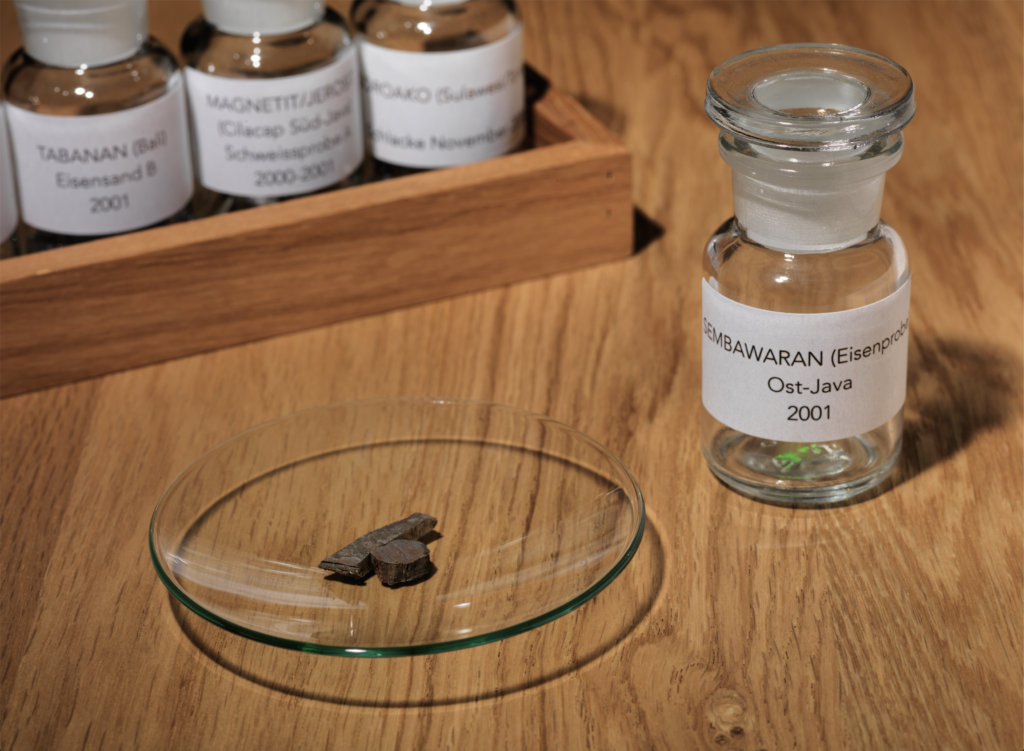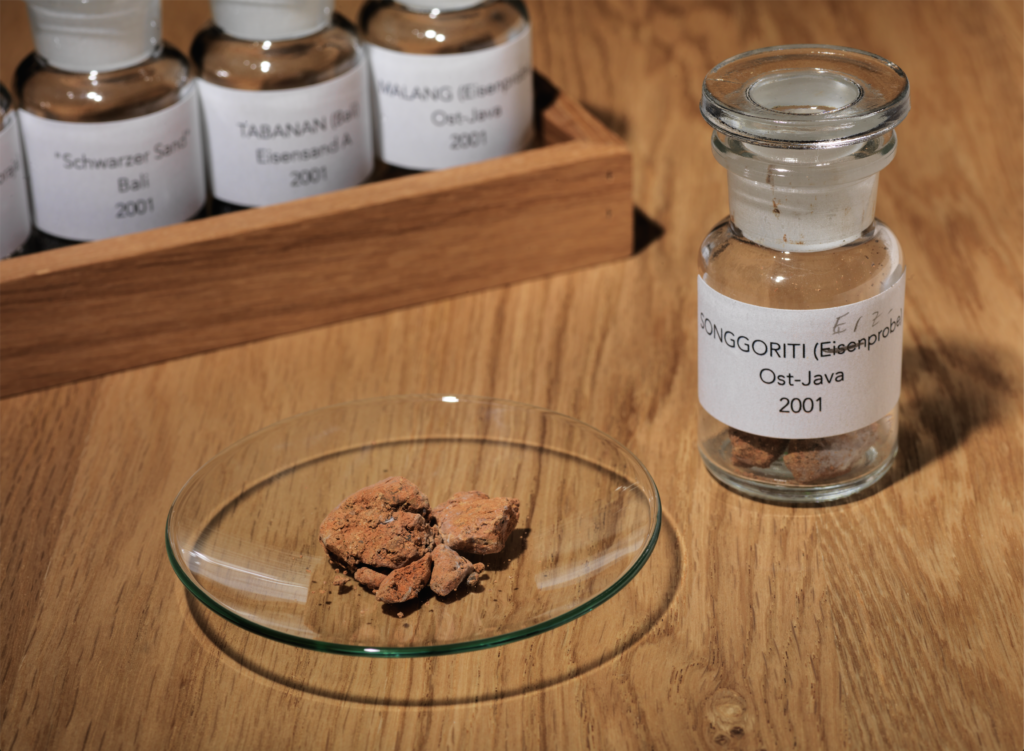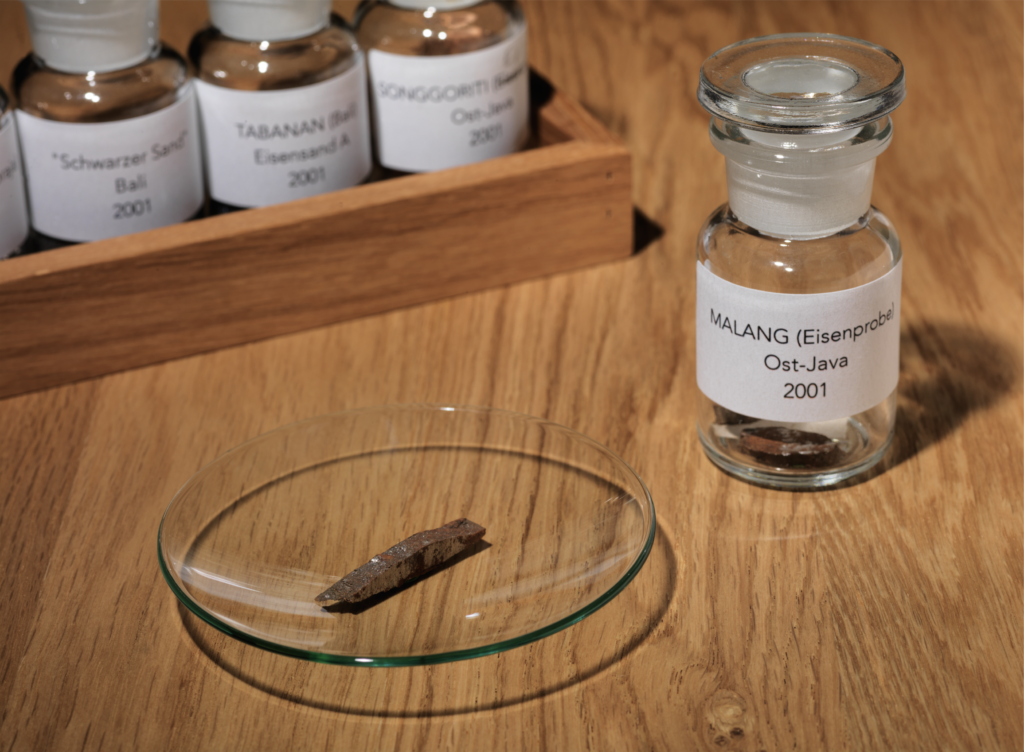Hematite
In Songgoriti, Sembawaran and Malang, Eastern-Java, Dietrich Drescher melted iron samples out of Hematite. Hematite, also spelled as haematite, is the mineral form of iron(III) oxide (Fe2O3), one of several iron oxides. It is the oldest known iron oxide mineral that has ever formed on earth and is widespread in rocks and soils. Hematite and ilmenite form a complete solid solution at temperatures above 950 °C (1,740 °F) which facilitates melting with traditional methods.
Hematite is colored black to steel or silver-gray, brown to reddish brown or red. Varieties include kidney ore, martite (pseudomorphs after magnetite), iron rose and specularite (specular hematite). While the forms of hematite vary, they all have a rust-red streak. Hematite is harder than pure iron but much more brittle. Maghemite is a hematite- and magnetite-related oxide mineral. The name hematite is derived from the Greek word for blood, haima, due to the red coloration found in some varieties of hematite. The color of hematite lends itself to use as a pigment. The English name of the stone is derived from Middle French: Hématite Pierre, which was imported from Latin: Lapis Hæmatites around the 15th century, which originated from Ancient Greek: „blood-red stone“.
Huge deposits of hematite are found in banded iron formations. Gray hematite is typically found in places that can have still standing water or mineral hot springs. The mineral can precipitate out of the water and collect in layers at the bottom of a lake, spring, or other standing water. Hematite can also occur without water, however, usually as the result of volcanic activity. Clay-sized hematite crystals can also occur as a secondary mineral formed by weathering processes in soil, and along with other iron oxides or oxyhydroxides such as goethite, is responsible for the red color of many tropical, ancient, or otherwise highly weathered soils.
Ochre is a clay that is colored by varying amounts of hematite, varying between 20% and 70%. Red ochre contains non-hydrated hematite, whereas yellow ochre contains hydrated hematite (Fe2O3• H2O). The principal use of ochre is for tinting with a permanent color. The red chalk-writing of this mineral was one of the earliest in the history of humans. The powdery mineral was first used 164,000 years ago by the Pinnacle-Point possibly for social purposes. Hematite residues are also found in graves from 80,000 years ago.
Rich deposits of hematite have been found on the island of Elba that has been mined since the time of the Etruscans.



